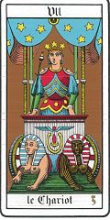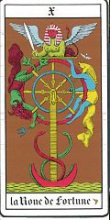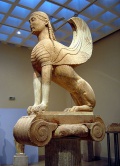The Sphinx
The Sphinx is a mythical creature found among the Phoenicians, Hittites, Assyrians, Egyptians, and Greeks.
== Egypt ==
A Sphinx (from spanch - that which receives life) was in Egypt a representation of a male lion, mostly with man's head, sometimes with or also with Aries , falcons- or sparrowhead.
Egyptian attributes are solar disc, pectorals, the uraeus snake or double crown. Some sphands, which were originally called 'Hu', also have wings, in contrast to the original form.
Examples are the Sphinx of Giza and the Sphinx of Hatshepsut. The dormant sphinxes in Karnak have a ram head.
Most of the sphinxes represent a king or pharaoh, or other Egyptian gods with animal bodies. Other representations in horizontal form served as guardian figures before entries of Temples.
== Greece ==
A Sphinx (sphíngo : Infinitive: sphíngein: strangle (by spell)) , as a figure of Greek mythology, was a mixture of lion and woman with wings, or a woman with the paws and breasts of a lioness.
The Sphinx was regarded as the descendant of Typhon and Echidna and therefore as the demon of destruction and disaster.
According to Hesiod she is a descendent from Orthus and Chimaera (Theogonie 326).
The legend of the Greek Sphinx states that she always strangled passing travelers if they could not solve the riddles she had set.
The riddle was: "It is four-footed in the morning, bipedal at noon, and in the evening tripedal. Of all the creatures it changes only in the number of its feet; But when it moves most of the feet, strength and speed are the least. ?
Oedipus solved the riddle whose answer is "the man": as a child he crawls on all fours, as an adult he walks on two legs and in his old age he needs a stick as a third leg.
The Sphinx jumped after that from a cliff into the sea.
From the allegorical point of view, the Greek Sphinxes, as first guardians of the threshold, represented the human libido to be overcome (U.Path 7), the wings pointing to the Logos (eg. OM) as a probable means of the Pranayama, as the seat of the higher prana is in the heart and also on the 'sensual or fleshy heart'. The hierophant thereby overcomes the cycle of the aging of the soul.
== Tarot ==


There she is integrated into the seat and has a human head with curls.
On card 7, the sphinxes are refined. They rest, and they already have a different body color, a softer face, and a pharaoh frisson. They look in opposite directions, however, since the dark Sphinx has interests other than the rose Sphinx. Only the lower body is common and part of the ruler's vehicle, who still holds a dark staff in his right hand.
Before, on tarotcard 8 the separation of good and evil took place.
On the card 10 the Sphinx is increased and leads an independent existence. The winged logos is already visible on card 7. It has now become a part of the heart's powers.
The upper body of the sphinx is light green. The backpart still has the dark color of the clothes of the damon at the wheel.
The scene 10 reminds of the whirling of the milk ocean in hinduism. Another comparison is Kameshvara, who resides in the area of Kamadhenu.
== Weblinks ==
- Mythindex about the sphinx
- Classics pages about the sphinx
- Theoi about the sphinx
of Spirituality
universal-path.org

